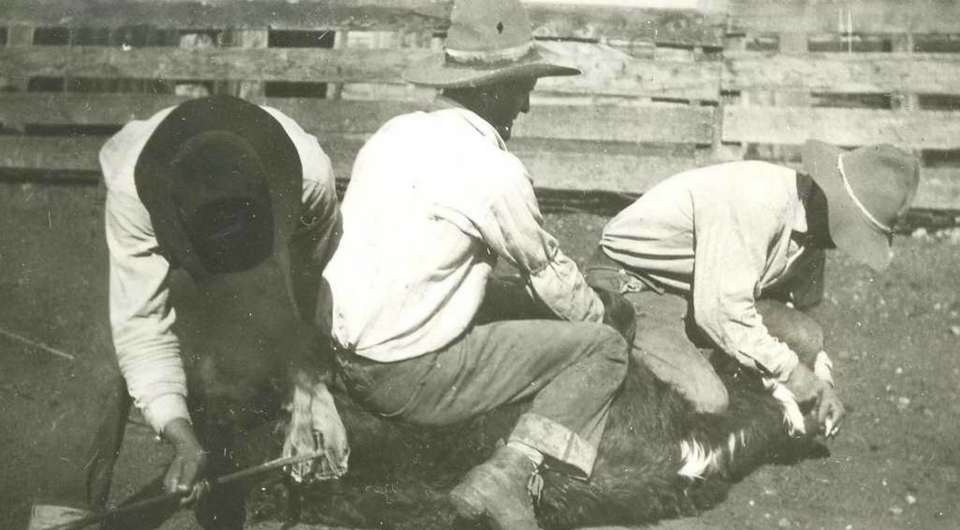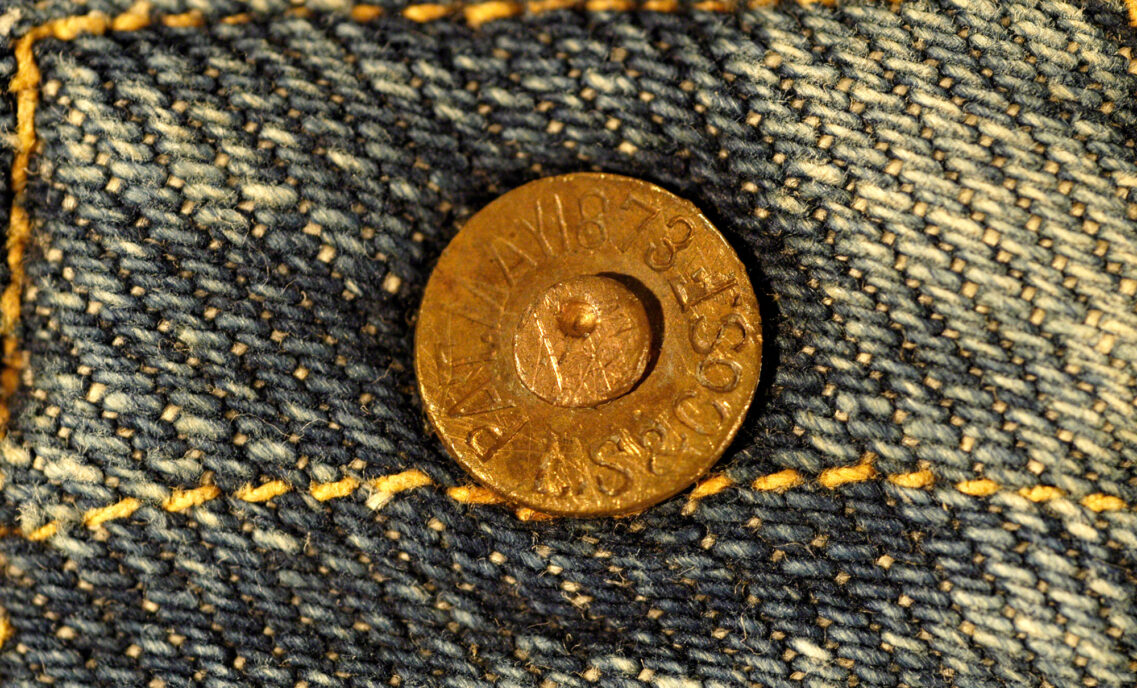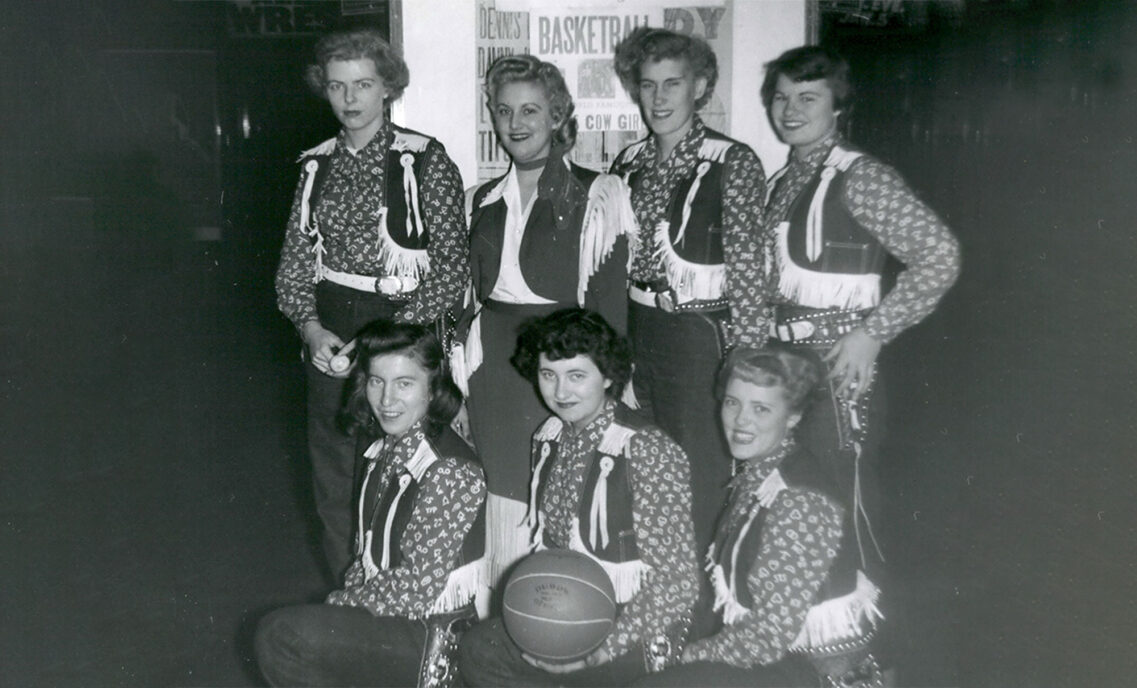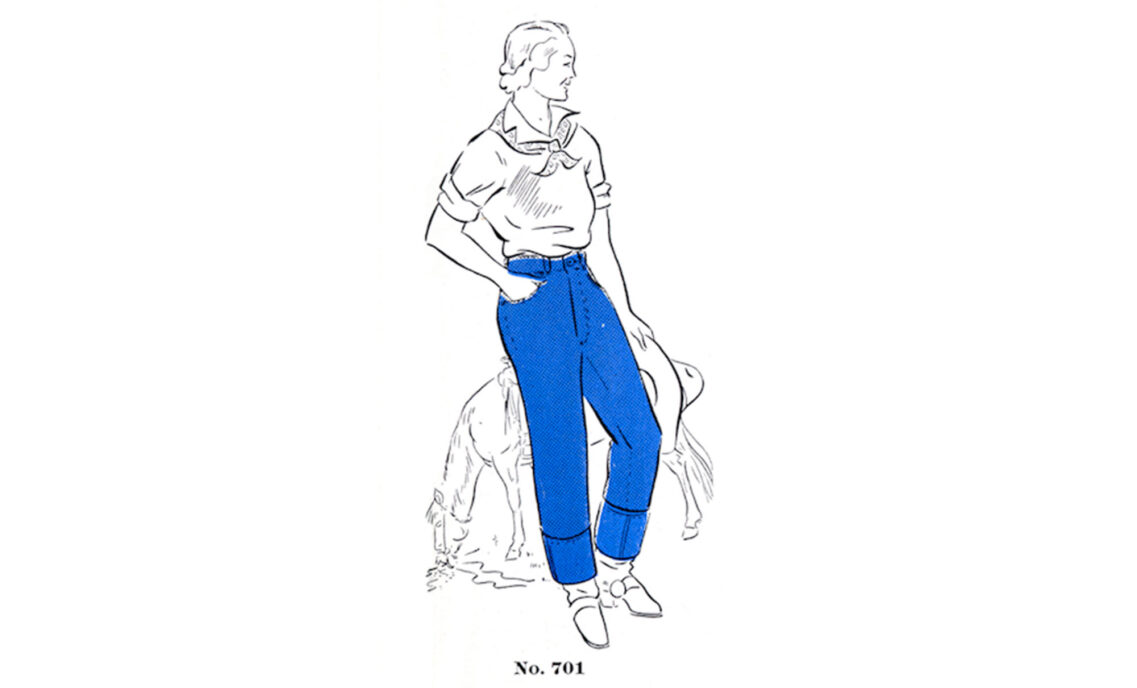Because Levi Strauss & Co. was born in the American West, cowboys were among the earliest wearers of 501® waist overalls — blue jeans. Our copper-riveted pants were tough enough to withstand hours on horseback or the physical demands of ranch duties like branding.
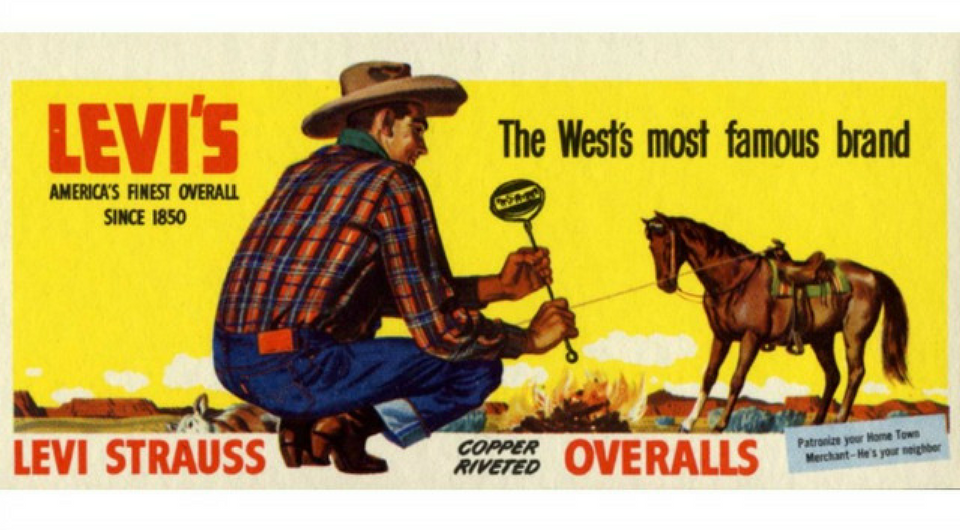 Cowboys were an authentic part of LS&Co. history and its geographic roots. It’s no surprise then, that when Levi Strauss & Co. was considering a symbol to represent its products in the 1930s, it chose the cowboy. For the next four decades, cowboy imagery was featured in the company’s advertising and point-of-sale pieces displayed at Western stores where Levi’s® products were sold.
Cowboys were an authentic part of LS&Co. history and its geographic roots. It’s no surprise then, that when Levi Strauss & Co. was considering a symbol to represent its products in the 1930s, it chose the cowboy. For the next four decades, cowboy imagery was featured in the company’s advertising and point-of-sale pieces displayed at Western stores where Levi’s® products were sold.
The Saddleman character arose out of this tradition of cowboy imagery. LS&Co. created its own cowboy character, a man dressed in Levi’s® denim overalls holding an “LS” brand with a saddle tossed over his shoulder.
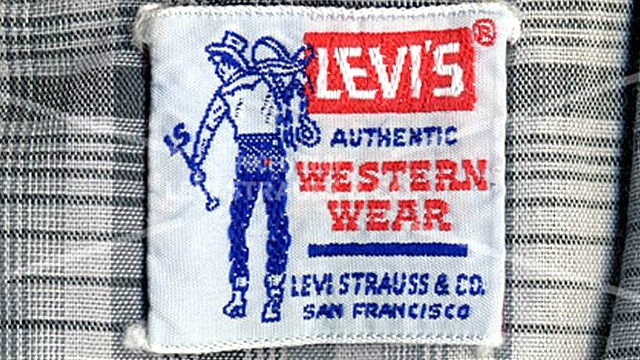
LS&Co. used the Saddleman on everything from labels to belt buckles and marketing pieces. The company created Saddleman statues, dressed in a white cowboy hat, red shirt and a kerchief, that were showcased in stores. LS&Co. named its employee newsletter The Saddleman and even had Saddleman awards for best salesman.

Keep up with the Archives and other cool LS&Co. heritage news – follow Tracey on Twitter.
*Main image courtesy of Dangberg Home Ranch Historic Park, Nevada



